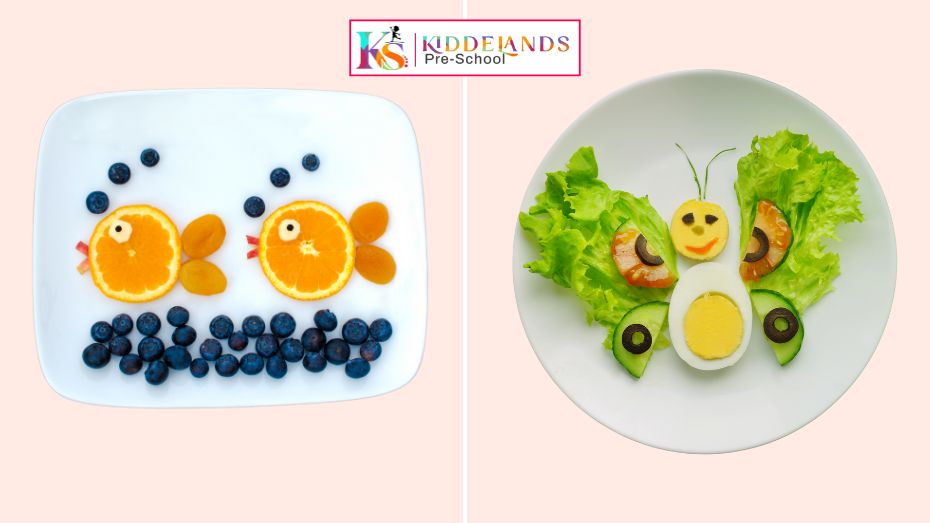Are you tired of racking your brain every morning thinking, “What should I pack in my toddler’s lunchbox today?” You’re not alone! Parents everywhere face this daily struggle. A 2-year-old is curious, full of energy, and often a picky eater — which makes meal planning even more challenging.
The good news? With a little artistry and planning, you can make food time exciting and nutritious. In this detailed guide, we’ll explore 15 easy and healthy toddler lunch ideas to keep your little one happy and full, along with helpful tips to make meal prep stress-free for you.
Download & Explore the RTE Admission User Manual
Download the Government Official RTE User Manual to easily understand the Right to Education process, step-by-step guidelines, and important instructions — all in one place.
Why Healthy Lunch Matters for Your 2-Year-Old
Proper nutrition at this age is critical. A balanced lunch provides the essential fuel needed for play, learning, and growth. It also shapes your child’s food preferences and habits for the future.
Building Good Eating Habits from a Young Age
Toddlers are at a stage where they start asserting independence and may show strong likes or dislikes. Now is a great opportunity to let them discover balanced meals for toddlers with tastes, textures, and colors. The more you expose them to healthy foods now, the more likely they will continue to enjoy them as they grow older.
Consistently offering healthy choices, even when they refuse at first, encourages curiosity and acceptance over time.
Key Nutrients Toddlers Need for Growth
A healthy lunch should provide:
- Protein for muscle and tissue development (think eggs, tofu, lentils).
- Calcium and vitamin D for strong bones (dairy, fortified foods).
- Healthy fats for brain development (avocado, ghee, nut butters).
- Iron and zinc for immune support and overall growth.
- Fiber, vitamins, and minerals from colorful fruits and vegetables for digestion and immunity.
When these nutrients are part of their daily diet, your child gets a strong foundation for healthy development.
Read more: 21 Questions to Ask During a Preschool Visit or admission

What to Include in a Balanced Toddler Lunchbox
Creating a balanced meal isn’t about fancy recipes or complicated ingredients. The secret lies in creating a colorful mix of food groups that not only look inviting but are also simple for little hands to enjoy.
Veggies and Fruits: Colorful and Essential
Fruits and veggies should make up at least half the lunchbox. They provide important vitamins and fiber, which are vital for digestion and immunity.
Some fun ideas:
- Sliced cucumbers, carrots, and bell peppers in star or flower shapes.
- Fruit kebabs with berries, melon, or banana on child-safe sticks.
- Mango or apple slices dipped lightly in lemon water to prevent browning.
Proteins for Energy and Growth
Proteins are important for strength and energy. They also help keep your toddler feeling full longer, avoiding unnecessary snacking.
Examples:
- Scrambled eggs or omelets cut into small pieces.
- Homemade paneer cubes.
- Chicken or fish patties for non-vegetarian options.
- Lentil or chickpea patties.
Healthy Carbs to Keep Them Full and Happy
Healthy carbohydrates provide energy for all that running, climbing, and exploring.
Choices include:
- Whole-grain bread or chapati rolls.
- Brown rice or millet.
- Small pasta shapes made from whole wheat or quinoa.
- Soft idlis or dosa made with mixed grains.
By combining all three — fruits/veggies, proteins, and healthy carbs — you ensure a wholesome, balanced meal every day.
15 Quick and Nutritious Toddler Lunch Ideas
Finger Foods Toddlers Will Love
- Mini vegetable pancakes with yogurt dip:
Mix grated carrot, zucchini, and spinach into a whole wheat batter and cook as small pancakes. Pair with homemade yogurt dip.
- Cheese and veggie quesadilla slices:
Fill a whole-wheat tortilla with grated cheese and chopped veggies, toast lightly, and cut into triangles.
- Homemade veggie nuggets with ketchup:
Blend boiled potatoes, peas, carrots, and breadcrumbs, shape into nuggets, and shallow fry or bake.
- Fruit and cheese skewers:
Combine mild cheese cubes with grapes or melon pieces on small, blunt sticks.
- Sweet potato fries with hummus:
Bake sweet potato sticks in olive oil until crisp. Serve with creamy hummus for dipping.
Easy-to-Pack Lunchbox Ideas for Daycare or Preschool
- Mini whole-wheat sandwiches with avocado and carrot:
Mash avocado with a hint of lemon and spread it on whole wheat bread, then add grated carrot. Cut into fun shapes using cookie cutters.
Boiled eggs with whole-grain crackers and fruit slices:
Simple, protein-rich, and easy to prepare ahead of time.
- Mixed veggie pulao with curd :
Colorful rice with veggies like peas, carrots, and beans, served with plain yogurt on the side.
Stuffed paratha rolls with spinach and paneer:
Roll up a stuffed paratha into a wrap, making it easy for small hands to hold.
- Idli bites with coconut chutney:
Soft, bite-sized idlis paired with mild coconut chutney or tomato chutney.
Preschool Tour Checklist for Parents:
Use this checklist during your tour to make sure you’re covering all the key areas before making a decision.
Allergy-Friendly Lunch Options
- Rice and lentil mini balls (appe style):
Shape cooked rice and dal into small, lightly spiced balls, then crisp them up in an appe pan for a fun bite-sized treat.
- Oat and banana pancakes:
Mix mashed banana, oats, and milk to create soft, naturally sweet pancakes.
- Vegetable khichdi with ghee:
A soothing, balanced meal that’s gentle on tiny tummies and easy to digest.
- Homemade millet dosa wraps with veggies:
Millet dosas filled with grated carrots, beets, and cabbage, then rolled up.
- Cucumber and carrot sushi rolls (without raw fish):
Wrap thinly sliced cucumber and carrots with rice in a soft roti or nori sheet, then cut into bite-sized pieces.
Tips for Making Mealtime Fun and Stress-Free

Lunch doesn’t have to be a battle! With a few tricks, you can make mealtime exciting and stress-free for both you and your toddler.
Creative Ways to Present Toddler Food
- Use colorful plates and sectioned lunchboxes.
- Create fun shapes using cutters or molds.
- Serve bite-sized portions that are easy to pick up.
- Tell a little story around the meal — “Look! These broccoli trees are for the dinosaur to munch on!”
How to Handle Picky Eaters Gracefully
- Avoid pressuring or bribing your child to eat.
- Keep introducing rejected foods in different ways and combinations.
- Eat the same foods as a family so they see you enjoying them.
- Respect when they say they’re full — toddlers have natural appetite control.
Common Toddler Feeding Questions Answered
Determining How Much Food Is Enough
One of the most common concerns parents have is: “Am I giving my toddler too much or too little food?”
At age 2, toddlers’ appetites can vary from day to day (or even meal to meal!), which is completely normal. Some days they might eat everything on their plate and ask for more; other days, they may barely touch their food.
Understanding Toddler Hunger Cues
Watch for hunger cues like stretching out for food, pointing with interest, or showing clear excitement when their meal arrives.
Signs they’re full: Turning away, playing with food, pushing the plate away, spitting food out.
Rather than focusing on how much they eat at each individual meal, look at their overall intake over a few days to a week.
General Portion Guidelines
As a rough guide, toddlers usually need about one-fourth to one-third of an adult portion per meal.
Here’s a quick example:
- Grains/Carbs: ¼ to ½ slice of bread, or 2–4 tablespoons of rice/pasta.
- Fruits/Vegetables: About 1–2 tablespoons per year of age (so, roughly 2 tablespoons for a 2-year-old).
- Protein: 1–2 tablespoons of cooked meat, eggs, or beans.
- Dairy: ½ cup of milk or yogurt.
Always start with smaller portions and allow them to ask for more if they’re still hungry.
Avoiding Pressure
Avoid forcing your child to eat, as this can backfire and make them develop a negative relationship with food.Instead, create a calm, positive mealtime environment where your toddler feels safe exploring new tastes and learning to listen to their own hunger signals.
Conclusion
Preparing a healthy, fun, and balanced lunch for your 2-year-old might seem like a big task, but with a little creativity and planning, it becomes much easier. These 15 easy and healthy toddler lunch ideas are designed to make your life simpler and your child’s meals more exciting.
By offering colorful, nutrient-rich, and age-appropriate foods, you help your toddler develop healthy eating habits that last a lifetime. Remember, it’s not about perfection but about progress and patience.
Happy lunch-packing and happy feeding!

![15 Healthy & Easy Toddler Lunch Ideas for 2-Year-Olds [Updated 2025]](https://kiddelands.com/wp-content/uploads/2025/05/15-Easy-Health-Toddler-Lunch-Ideas-for-2-Year-Olds.jpg)

